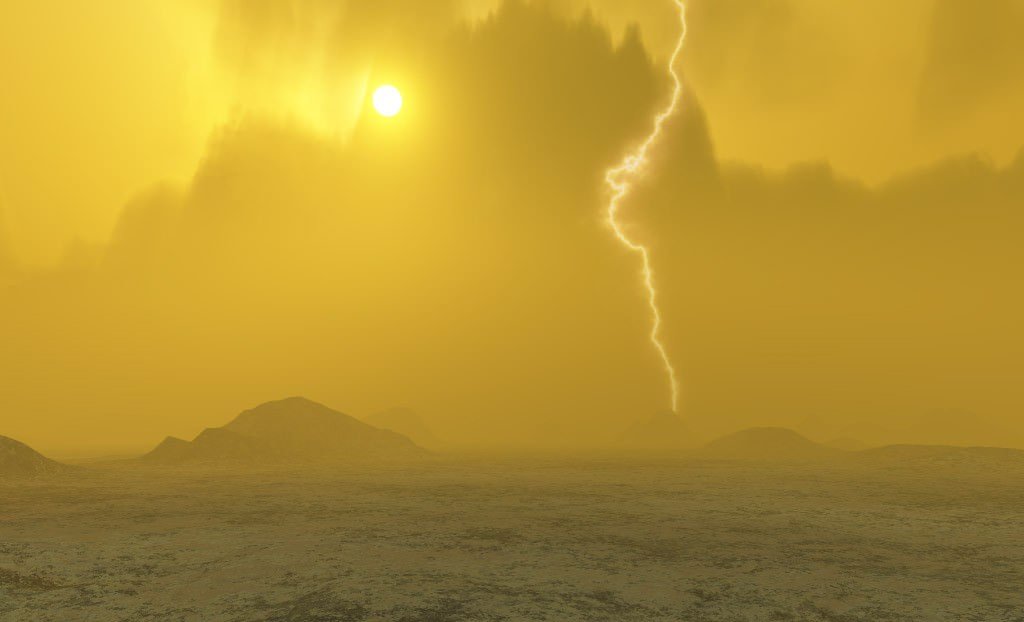Reasons for Venus’s Death
Venus has had a warm heart for billions of years since it is only marginally smaller than Earth. However, that heat has betrayed this planet, which is sometimes referred to be Earth’s sibling. Now, layers upon layers of a toxic atmosphere composed of sulfuric acid and carbon dioxide engulf that planet. Nearly 100 times the air pressure at sea level on Earth is experienced at the surface. The deepest valleys record temperatures of over 900 degrees Fahrenheit, while the average temperature is above 700 degrees Fahrenheit, more than hot enough to melt lead.

Venus is a twisted sister if she is Earth’s sister after all. We believe that Venus, like Mars, formerly had oceans filled with liquid water and a thinner, warmer atmosphere. The theory that Venus and Earth developed in a manner similar to that of Mars, in nearly the same orbits with roughly the same material, is a little more flimsy than that of Mars, where the evidence for water is seen right before our eyes. So, the amount of water in our bodies should have been about the same at birth.
Much like Earth, the majority of the water would have been buried deep in the mantle, chemically bound up in rock. However, some of it might have surfaced soon after formation and built up a supply there, stabilised once more by a thick atmosphere, or it might have been carried to the surface by hosts of comets rich in water.
Venus was doomed by our own cunning Sun, not any fault of its own. Stars steadily become brighter as they age. It’s undetectable day to day, but over millions of years, it dramatically transforms a star’s personality. The habitable zone of our Sun was moved inwards billions of years ago from its current location, but as it becomes brighter and hotter, the habitable zone gradually moves outward.
Has life ever existed on Venus? Given the unbearable temperatures on the surface that make investigation all but impossible, I doubt we’ll ever know. However, it probably included water and a luscious atmosphere—the necessary components. If life did establish itself, it did not endure for very long. Venus grew increasingly warmer as our Sun grew older. More water exists as vapour in the atmosphere of a warmer planet than as liquid at the surface.
The only noticeable alteration at initially was a greater dew point, which served as a marker for the inevitable end. However, Venus reached a tipping point in the past; the precise moment is unknown. The atmosphere of Venus became overly adept at retaining the heat emitted by the surface due to an excess of water vapour. The radiation became trapped in the atmosphere, heating it up, rather than being able to break through the cloud and reach space.
At least what happened next was thankfully swift. Venus started a feedback cycle in which it increased the amount of heat it released into the atmosphere, boiling the oceans further to the point of increasing vaporisation and rising temperatures. Initially, the shallow lakes and streams vanished, followed by the deeper oceans, until all remaining water was carried by atmospheric winds.
It was not long until the water vapour dissipated due to its closeness to the constantly shining Sun. It was battered by solar radiation, which broke its chemical bonds and sent the hydrogen and oxygen hurtling out of our solar system in a melancholy procession.
This is the point at which Venus’s plate tectonics, if it existed at all, would have ended. The huge slow grinding of the plates seized up, trapping the crust in place because there was no water to act as a lubricant. Because of the rocks’ ability to bind carbon dioxide and be drawn deep into the mantle, the continuous churning serves as a natural sink for carbon, limiting an excessive buildup of carbon in the atmosphere.
However, in the absence of plate tectonics’ purifying influence, carbon dioxide concentrations increased to hazardous levels, and the gas’s inherent capacity to absorb radiation from the surface smothered any last hope for saving the planet. The atmosphere would eventually topple over itself to become the bloated mass it is today.
Venus strangled herself as our Sun grew older.
Since the Sun is still in its early stages of life, Venus is not the only one that shares that fate. With each year that goes by, its habitable zone gradually expands as it continues to brighten and warm the solar system.
Eventually, after around 500 million years, Venus won’t be by herself. The Earth’s waters will boil, our continents will stop moving in the way they always have, and we will finally be identical to our sister—dead, lifeless, and choking on our own bloated atmosphere.
